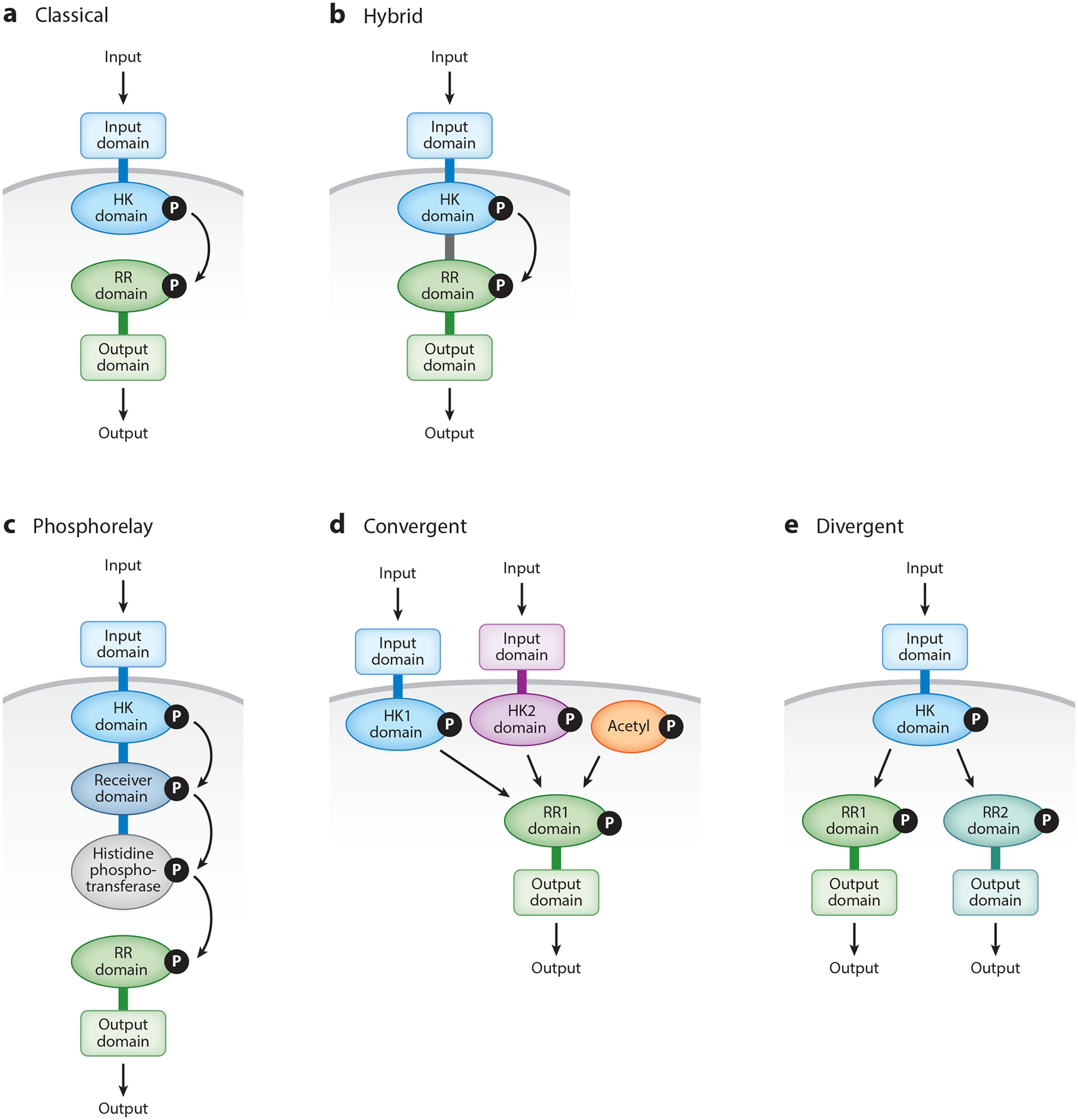Figure 1.

Architectural classes of two-component signal transduction systems, and of signaling pathways using two-component system proteins. (a) In classical systems, the sensor harboring an input domain and a histidine kinase (HK) domain responds to an input by autophosphorylating at a conserved histidine residue. The phosphorylated sensor serves as a phosphoryl donor to the regulator harboring a response regulator (RR) domain and an output domain. The phosphorylated regulator generates an output. (b) A hybrid system harbors all the domains described for the classical system in panel a, in a single polypeptide. (c) In a phosphorelay, there are four consecutive phosphotransfer events, starting when a sensor responds to an input by autophosphorylating from ATP at a conserved histidine residue. The phosphoryl group is then transferred to a conserved aspartate in the RR domain and from there to a histidine residue in the histidine-containing phosphotransferase domain, and ultimately to an RR domain, which upon phosphorylation modifies the output domain to generate an output. The sequential phosphotransfer may occur between different domains of a single polypeptide, as depicted here, or between separate proteins harboring these domains. (d) In a convergent signaling pathway, distinct signals activate different sensors that modify the phosphorylation state of a single regulator to generate an output. The phosphorylation state of a regulator may also be modified by metabolites such as acetyl phosphate. (e) In a divergent signaling pathway, a sensor responds to a signal by modifying the phosphorylation state of two regulators, thereby generating two different outputs.
